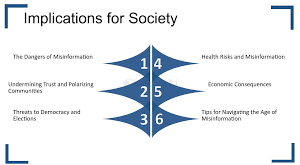Artificial Media: The destiny of content advent
introduction
Artificial media is information material that is either created or enhanced by artificial intelligence, from text and audio to pictures and video. The advancements in deep learning technologies, neural networks, and large language models have given way to increasingly advanced forms of artificial media,
which enable machines to produce content much like, or maybe even better than, that generated by humans.
In the last few years, the field has seen explosive growth, powered through breakthroughs in AI and machine learning. While synthetic media holds great promise for industries like entertainment, education, and marketing,
it also opens serious ethical and societal questions about authenticity, intellectual property, and the spreading of misinformation. This article explores the different types of artificial media, their packages, the technologies that make them viable, and the challenges they pose.
What is Artificial Media?
Artificial media generally refers to content that is either partially or completely generated using AI algorithms. The term summarizes several types of media, including:
1. Textual Content Technology:
AI models, such as fashions emanating from OpenAI’s GPT series and other big language fashions, generate coherent, contextually applicable textual content in simulated human writing throughout several topics and styles.
2. Synthetic Audio:
AI with the help of deep gaining knowledge of fashions can synthesize speech to create synthetic voices that sound similar to real humans regarding speech styles and tone.
3. Synthetic Imagery:
GANs generate realistic images of people, objects, and scenes that do not exist in reality.
4. Deepfake Videos:
AI technologies tamper with video content: face swapping or changing lip movements to make hyper-realistic videos of people saying or doing things they have never done.
4. virtual Influencers and Avatars:
The AI-generated characters that engage audiences on social media or other virtual channels often find applications in advertising or entertainment settings.
The Technology of Synthetic Media
Synthetic media is made possible by technology advancements in machine learning and AI – particularly those coming together in ways such as:
Generative Adversarial Networks (GANs)
GANs are a class of system learning frameworks wherein 2 neural networks-a generator and a discriminator-work together. The former generates synthetic statistics, such as an image, while the latter assesses how close the generated content material is to real statistics.
The process goes on iteratively, at the end of which the generator improves over time until it produces content that the discriminator cannot easily distinguish from real information.
GANs have been instrumental in the advent of synthetic images, motion pictures, and audio. For example, the “This person Does not Exist” website uses a GAN to generate photorealistic human faces that might be utterly fake.
Transformer models
Transformer architectures, such as GPT, are the backbone behind AI-powered text generation technology. It is trained on large datasets of texts to understand the probabilities of the next word in any given sequence, hence their capability for generating contextually relevant and often quite coherent text.
The larger it gets, the more tasks it is able to handle with high similarity in writing to that of a human-being: news articles to creative content.
Neural TTS fashions
AI-powered text-to-speech models leverage deep learning to convert written text into spoken words. Advanced models can produce very realistic, almost humanlike speech that is almost, if not completely, indistinguishable from human speech.
Giants like Google, Amazon, and Microsoft have developed state-of-the-art TTS systems for digital assistants, audiobooks, and voice-overs while startups are pushing the envelope to create voices that can emulate specific tones and cadences from unique individuals.
Fashion Transfer and Content Manipulation
In the creation of synthetic videos, AI models are applied either to manipulate existing video images or to create scenes completely from scratch. The best-known example of such technology is deepfakes, which use a mixture of neural networks to swap faces or change actions in videos.
Other applications, including style transfer, apply the visual appearance from one video or image to another, thus allowing distinctive content to be created visually.
Artificial Media Programs
The usages of artificial media are immense and keep on developing with rocket speed. Several industries are still in the exploration phase for unleashing the power of these technologies in making innovation in content creation, marketing, and entertainment.
1. Entertainment and Media Production
Synthetic media is starting to play a transformative role in content creation within the amusement business. AI scripts, virtual actors, and deepfakes are generated for making content more efficiently and creatively.
For instance, filmmakers can use AI in de-aging actors or resurrecting figures of the past, thus enabling levels of creative flexibility previously unimaginable.
Web Gaming companies are also making use of artificial media in creating very realistic characters and speech, developing even more immersive storytelling. With the help of procedural content creation, for example, AI can create sprawling, detailed game worlds instead of having human designers manually create every single object.
2. Marketing and Advertising
Manufacturers and advertisers use synthetic media to create more personalized and scalable advertising campaigns. AI-generated influencers, also referred to as digital influencers, are acting on social media platforms, engaging audiences beyond human persona constraints.
Virtual influencers can be tailored to meet specific brand needs and are not constrained by physical appearance or personal scandal.
AI-generated textual content and voice-over technology also make possible hyper-personalized ads, whereby the messaging can be made to character visitors’ main preferences, location, and behavior.
3. Education and training
Synthetic media can power education to be more engaging and consumed in a rather interesting and accessible way. Integration of AI-enabled virtual avatars or teachers into online textbooks and learning applications, along with customized learning reports, will be possible.
Virtual teachers can thus modify their style of teaching primarily on the basis of alternatives such as the learning pace of students.
Further, with the development of fake video and audio, training scenarios can be really constructed. For instance, synthetic voice and characters can be used in virtual training environments for pilots, physicians, and squaddies,
offering realistic conditions, which otherwise do not require the use of real actors or highly expensive gadgetry.
4. Journalism and content technology
Increasingly, AI-generated text is being put into work in journalism, through the generation of news tales about repetitive topics such as financial reports, sports activities ratings, and climate updates.
In such cases, AI takes over the recurring reporting tasks, enabling human reporters to give more attention to extra complicated investigations of art and feature stories.
Agencies like OpenAI and Narrative science are developing tools that enable companies to automatically produce written reports, summaries, and analytics based on numerical inputs.
This is particularly valuable in disciplines such as finance and business Intelligence, where large volumes of data must be interpreted and communicated quickly .
5. Accessibility and Inclusivity
Synthetic media is also making virtual content more accessible to humans with disabilities. AI-generated captions, transcripts, and artificial voices can have content consumed via the senses of those that are deaf, hard of hearing, blind, or otherwise disabled.
Text-to-speech systems can have articles, social media posts, or even whole books read aloud, while speech-to-text systems transcribe spoken content in real time.
Furthermore, artificial media breaks language barriers through the on-screen, real-time translation of text, audio, and video, into consideration of extra inclusive and global conversation.
Ethical and Societal Challenges
While synthetic media holds numerous advantages, a number of ethical and societal challenges also arise. As the technology is getting advanced, the potential for its misuse is mounting as an issue of concern.
1. Deepfakes and False Information
Malicious use of deepfakes is one of the most talked-about ethical problems connected with synthetic media. Deepfake movies might be weaponized to spread fake information, impersonate public figures, and spread misinformation. This might have serious consequences for political stability, social trust, and character reputations.
For example, deepfake videos can be used in the manipulation of elections by showing politicians saying things they never said. Similarly, these deepfakes can also be utilized in blackmailing, harassment, or defamation because of their extreme personal and professional repercussions on the targeted individuals.
2. Authenticity and Belief
As synthetic media become more prevalent, telling the difference between what is real and what is fake will become increasingly challenging. In this way, it opens up questions about authenticity and belief in media.
Purchase buyers may also have difficulty taking into consideration if the material they are viewing or hearing is true, leading to a breach of faith amongst creators, media outlets, and audiences.
3. Intellectual property and ownership
Synthetic media blurs the trails between original and derivative works, raising complex questions about intellectual property. For instance, if an AI generates a certain piece of art, music, or text, who holds the rights to it-the AI developer, the user of the AI, or the AI itself?.
These are the issues that are currently debated in criminal and regulatory arenas because existing copyright law was written well before anyone considered AI-generated content.
4. Job Displacement
The bigger the role of AI in content creation, the bigger the concern over job displacement within the creative fields: from writers and graphic designers to video editors and voice artists, individuals have raised fears that these professionals will find themselves in competition against AI-generated creative preferences, shifting the creative labor market altogether.
But the promoters of artificial media counter with this: AI will enhance human creativity, not replace it, enabling artists to concentrate on high-order tasks and innovation.
The Future of Artificial Media
Artificial media’s future has a lot in store that is both exciting and unknown. Advances in AI and device learning will further continue to push the edge in what’s possible, leading to an increasing number of state-of-the-art and realistic artificial content.
While those technologies are developing, they should probably become an integral part of various industries, from amusement and advertising to education and journalism.
but societal implications of synthetic media have to be duly considered. Regulation will have to move with the times to handle such issues as deepfakes, highbrow belongings rights, and the capability for job displacement.


